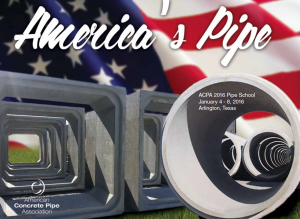(PRNewswire.com) – JASPER, Texas, Oct. 4 /PRNewswire-USNewswire/ — The Texas Parks and Wildlife Department recently learned a very costly lesson when it was forced to replace two miles of high-density polyethylene (HDPE) pipe with reinforced concrete pipe (RCP), after portions of the plastic drainage system collapsed, and 11,000 feet of pipe was determined to have questionable structural integrity, at the new John D. Parker East Texas Fish Hatchery near Jasper.
The $3.3 million repair bill – $3.2 million of which was paid by design firm HDR/FishPro – followed months of legal jockeying. The project has been delayed by more than a year.
“This design and installation failure was completely avoidable,” says Dr.Patricia D. Galloway, CEO of Pegasus Global Holdings Inc., and a noted authority on drainage pipe systems. “For some reason, HDPE pipe was specified for an application that was much more suited to reinforced concrete pipe. It was an accident waiting to happen from the very beginning.”
The failure was discovered when inspectors found two sections of 60-inch and 48-inch diameter HDPE pipe that had collapsed under 10-to-17 feet of earth fill.
“Because corrugated HDPE pipe is a flexible material, not an independent structure like RCP, up to 90 percent of its successful installation is driven by the soil envelope surrounding it,” explains Galloway. “It’s imperative that the design firm and the installing engineers account for a wide range of pipe-soil variables when dealing with HDPE, ranging from material properties to installation conditions to external loads, any of which can lead to catastrophic failure.”
“As we’ve seen in Jasper, when something goes wrong, liability almost always rests with the designers and/or engineers, not the manufacturer,” continues Galloway. “That explains why most specifiers and drainage design firms research and analyze a number of factors and conditions before specifying the type of pipe to be used, as required by the industry’s standard of care.”
As Todd Engeling, TPWD’s chief of inland hatcheries, said after the HDPE was replaced with reinforced concrete pipe, “We came out of this deal with a drainage system that is much more rigid and robust than what we originally had, and that’s a good thing.”
“It’s a shame they had to learn their lesson the hard way,” concludes Galloway.
For more analysis on drainage pipe design and installation, visit the American Concrete Pipe Association at http://www.concrete-pipe.org/cp_vs_hdpe.htm.


